By: Dominick L. Flarey, Ph.D, RN-BC, ANP-BC
President & Chief Consultant
Certified Bioenergetics Coach
BioEnergy Health Consultants, LLC
Explore the intricate meridian system and Qi’s role in health, acupuncture’s efficacy, and energy psychology’s healing impact.
The concept of energy flow through meridians in the human body is a cornerstone of Traditional Chinese Medicine (TCM) and has intrigued practitioners and patients alike for centuries. This article delves into the intricate web of energy channels known as meridians, the vital life force or Qi that flows through them, and the profound implications they have on our health and well-being. We will explore the ancient wisdom and modern interpretations of how energy moves within us, the therapeutic practices designed to regulate this flow, and the impact of lifestyle and environment on our energetic health.
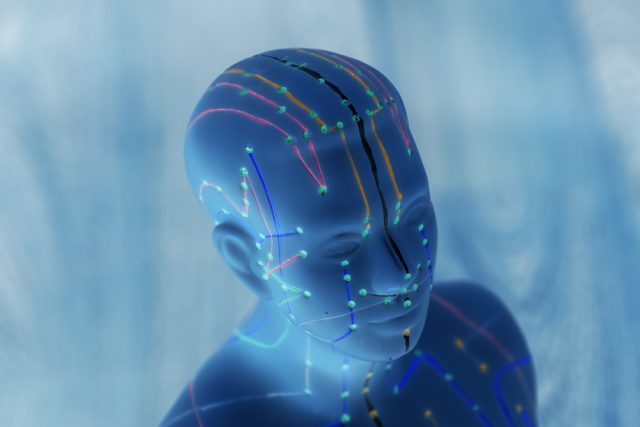 Key Takeaways
Key Takeaways
- Qi is a fundamental concept in TCM, flowing through meridians and influencing health, with acupuncture targeting 350 points to balance this flow.
- Twelve primary meridians correspond to bodily organs and functions, playing a crucial role in distributing energy and maintaining physical well-being.
- Acupuncture and meridian therapy are rooted in the selection of specific points to restore energy balance, supported by clinical evidence.
- Lifestyle factors, including diet, stress, and physical activity, significantly impact the flow of Qi and the functioning of meridians.
- Balancing Qi is vital for overall health, with techniques like Chinese massage and energy psychology aiming to maintain this equilibrium and prevent disease.
Understanding Qi and the Meridian System
The Concept of Qi in Traditional Chinese Medicine
In the realm of Traditional Chinese Medicine (TCM), Qi represents the fundamental life force that circulates throughout the body, animating and sustaining life. It is a concept that designates the psychophysical energies that permeate the universe, deeply intertwined with the health and vitality of an individual. The harmonious flow of Qi is considered essential for maintaining physical health and emotional well-being.
Qi is not merely a static force; it is dynamic and constantly in flux, influenced by various factors such as diet, stress, and environmental conditions. The practice of Qi Gong, for instance, exemplifies the active engagement with Qi through breath control, physical postures, and focused intention, aiming to cultivate and balance this vital energy.
The ceaseless flow of Qi is the very marker of life, propelling and regulating the body’s vital functions. Blood is seen as the carrier of Qi, with meridians and acupoints serving as pathways for its distribution. A disruption in the flow of Qi is often associated with illness, while its balanced circulation is linked to health and longevity.
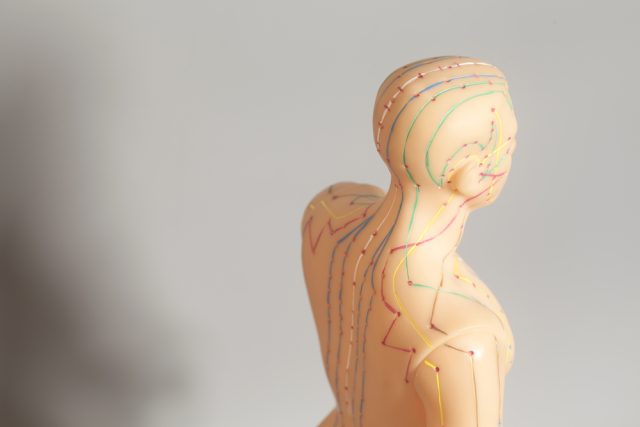 Anatomy of the Meridian System
Anatomy of the Meridian System
The meridian system is a complex network believed to be the conduit for Qi, or vital energy, which circulates throughout the human body. It comprises pathways that are not visible to the naked eye but are recognized through their physiological and pathological manifestations. These pathways are interconnected, forming a holistic matrix that relates to the body’s organs and functions.
- The meridian system includes 12 primary meridians, each associated with a specific organ.
- There are also eight extraordinary meridians that act as reservoirs for Qi and blood.
- The pathways are bilateral, running symmetrically on both sides of the body.
The meridian system is integral to the concept of health in Traditional Chinese Medicine, as it is believed that the proper flow of Qi is essential for maintaining balance and preventing disease.
Recent advancements in technology, such as infrared thermography, have provided tools to explore the meridian system further. While these methods do not directly visualize the meridians, they offer insights into the system’s functionality by monitoring changes in the body’s thermal field.
Interconnection Between Qi and Physical Health
The traditional Chinese medicine paradigm posits that the flow of Qi, or vital energy, is fundamental to maintaining physical health. Qi circulates through the body along meridians, pathways that are akin to rivers nourishing a landscape. When Qi flows freely, it supports the body’s natural ability to heal and maintain balance. Conversely, disruptions in Qi flow can lead to physical ailments and disease.
The concept of Qi is not unique to Chinese culture; it shares similarities with other traditional systems of health. For instance, the life force known as Prana in yogic philosophy also permeates all living things, emphasizing the universality of energy in health practices. The interplay between Qi and physical health is multifaceted, involving aspects such as immune function, pain management, and blood pressure regulation.
Balancing Qi is crucial for an effective immune system, enhancing the body’s defenses and fostering swift recovery from illness. This balance is achieved through practices that open and energize the meridian lines, thereby alleviating chronic pain and lowering blood pressure.
The meridian system, with its 350 acupuncture points, offers a tangible means of manipulating Qi flow to restore balance and health. Clinical practices such as acupuncture are based on the principle that inserting needles into these points can correct imbalances, demonstrating the intimate connection between Qi and physical well-being.
The Twelve Primary Meridians and Their Significance
Mapping the Energetic Pathways
The human energy body comprises a complex network of meridians, which are pathways that facilitate the flow of Qi, or vital energy. These pathways are integral to the body’s energetic anatomy and are essential for maintaining health and vitality. Meridian mapping involves the identification and tracing of these pathways throughout the body, providing a blueprint for various therapeutic practices, including meridian tapping.
Meridian tapping, a technique used in energy psychology, involves the rhythmic tapping on specific meridian points to promote energy flow and emotional healing. This practice is based on the premise that physical and emotional issues are linked to disruptions in the body’s energy system.
The efficacy of meridian tapping lies in its ability to access the body’s energy system non-invasively, offering a unique approach to restoring balance and well-being.
While the primary meridians are well-documented, the exact mechanisms by which tapping influences the energy flow remain a subject of ongoing research. However, practitioners report significant improvements in emotional and physical health following meridian tapping sessions.
Organ Associations and Meridian Functions
In Traditional Chinese Medicine (TCM), the human body is seen as a complex network of energy pathways known as meridians. These meridians are associated with specific organs and are believed to govern the flow of qi, or vital energy, throughout the body. The proper functioning of these meridians is essential for maintaining the body’s balance and health.
Each meridian is linked to an organ system and has a set of functions that are not merely physiological but also pertain to the emotional and spiritual aspects of an individual’s well-being. For instance, the Kidney Meridian (KI) is associated with the fundamental life force and willpower, while the Liver Meridian (LV) is related to the regulation of emotions and the smooth flow of qi.
The interconnectedness of meridians and organ systems underscores the holistic approach of TCM, where physical symptoms are often seen as manifestations of deeper energetic imbalances.
The following table provides a concise overview of the primary meridians and their associated organs:
| Meridian | Associated Organ | Key Functions |
|---|---|---|
| KI | Kidney | Governs growth, development, and reproduction; regulates water metabolism |
| LV | Liver | Ensures the smooth flow of qi and blood; regulates emotions |
| SP | Spleen | Governs digestion; transforms and transports nutrients |
| HT | Heart | Controls blood and houses the mind; affects joy and mental clarity |
| LU | Lung | Governs respiration; regulates the water passages |
| LI | Large Intestine | Transforms waste; regulates fluid balance |
It is through these meridians that TCM practitioners aim to diagnose and treat various ailments, by identifying and rectifying imbalances in the flow of qi.
The Role of Meridians in Energy Distribution
In the intricate network of the human energy body, meridians serve as the primary channels for the flow of Qi, or vital energy. These pathways are fundamental to the concept of energy distribution across the body’s systems. When Qi flows freely through the meridians, it ensures the nourishment and balance of the body’s organs and functions. However, the presence of energy blocks in the meridians can lead to disruptions in this flow, manifesting as physical or emotional imbalances.
To understand what are the meridians in the body, one must consider them as invisible rivers of energy that interconnect the body’s landscape. These rivers can experience stuck energy in the meridians, akin to a dam blocking a waterway, which can result in a range of health issues. Techniques such as acupuncture aim to enhance energy flow in the meridians, effectively removing blockages and restoring the body’s energetic harmony.
The meridian system is not only a cornerstone of traditional healing practices but also a subject of modern scientific inquiry. Advances in technology have allowed for new methods of visualizing and measuring the effects of meridian therapies.
The following list outlines the primary effects of balanced meridian energy flow:
- Optimal functioning of bodily organs
- Harmonized emotional states
- Increased vitality and well-being
- Prevention of illness through energy equilibrium
Acupuncture and Meridian Therapy
Principles of Acupuncture Point Selection
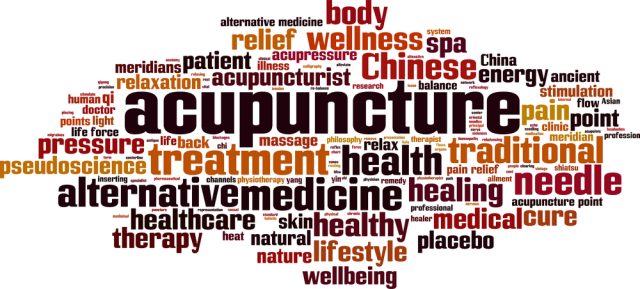 The selection of acupuncture points is a critical aspect of the therapeutic process, guided by a deep understanding of the meridian system. Acupuncturists select points based on the specific imbalances or blockages within the meridians, aiming to restore harmony and alleviate symptoms. The choice of points is influenced by various factors, including the nature of the patient’s condition, the meridians involved, and the individual’s overall energy profile.
The selection of acupuncture points is a critical aspect of the therapeutic process, guided by a deep understanding of the meridian system. Acupuncturists select points based on the specific imbalances or blockages within the meridians, aiming to restore harmony and alleviate symptoms. The choice of points is influenced by various factors, including the nature of the patient’s condition, the meridians involved, and the individual’s overall energy profile.
- The acupuncture points, acting as gates on the meridians, can close due to over-tensions such as physical traumas, emotional burdens, stress, and fears about the future.
- Stimulating the correct points can help reopen these gates, addressing imbalances and promoting the body’s natural healing processes.
The art of acupuncture is not merely a mechanical application; it requires the practitioner to assess the dynamic state of Qi flow and select points that resonate with the patient’s unique energetic landscape.
Clinical evidence suggests that the biopotential changes at acupuncture points are measurable and can be influenced by acupuncture stimulation. This underscores the importance of precise point selection to achieve therapeutic efficacy.
Mechanisms of Action in Acupuncture
The mechanism for the effect of acupuncture along meridians is a subject of ongoing research and scholarly discussion. Acupuncture is predicated on the principle that the body contains patterns of energy flow referred to as qi. The harmonious distribution of qi and blood is essential for health, and acupuncture seeks to regulate this flow. It is believed that the insertion of needles at specific acupoints can stimulate various types of energy, leading to preventive and therapeutic benefits.
Acupuncture points, or acupoints, are considered gates on the energetic meridians. When these gates close due to factors such as stress or trauma, imbalances or blockages occur. Acupuncture aims to reopen these gates, restoring balance and alleviating symptoms.
The stimulation of acupoints can be achieved through multiple modalities, including mechanical, heat, and electrical methods. For instance, transcutaneous low-frequency electrical stimulation has been used to mimic the effects of acupuncture, offering a needle-free alternative that can achieve comparable outcomes. This approach has shown increased acceptance among patients who may be averse to the traditional needle insertion method.
Clinical Evidence Supporting Acupuncture Efficacy
The efficacy of acupuncture as a therapeutic intervention has been substantiated through various clinical trials and research studies. Evidence concerning its effectiveness is quite strong, with health practitioners and athletes reporting positive perceptions of acupuncture use for pain management and recovery. Clinical trials have demonstrated acupuncture’s long-term effects in migraine prophylaxis, showing significant reductions in the frequency and intensity of migraine episodes.
Acupuncture’s role in pain management is particularly noteworthy. Studies have highlighted its success in reducing chronic pain associated with conditions such as back pain, arthritis, and muscular tension. Additionally, its impact on stress and anxiety suggests that acupuncture can induce a state of relaxation and emotional balance, which may contribute to its therapeutic benefits.
The therapeutic applications of acupuncture extend to sleep disorders as well, where it has been shown to improve sleep quality by promoting relaxation and addressing underlying imbalances. The following list outlines some of the key areas where acupuncture has been found effective:
- Pain Management
- Stress and Anxiety
- Sleep Disorders
Further research is needed to fully understand the mechanisms behind acupuncture’s effects and to optimize its integration into Western medical practices.
The Impact of Lifestyle and Environment on Qi Flow
Dietary Influences on Energy Balance
The human energy system, as conceptualized in Traditional Chinese Medicine, is significantly influenced by dietary habits. Nutritional intake plays a pivotal role in the maintenance of Qi, the vital life force that circulates through the meridian pathways. A balanced diet ensures the smooth flow of Qi, while imbalances in diet can lead to disruptions in energy flow and overall well-being.
- Whole grains and legumes are believed to support spleen health, which in turn aids the production and management of Qi.
- Green leafy vegetables and deeply colored fruits are associated with liver health, promoting the smooth flow of Qi and blood.
- Adequate hydration with water and herbal teas is essential for maintaining the fluidity of Qi.
The interplay between diet and energy balance is complex, with certain foods having the potential to either fortify or impede the flow of Qi. It is not merely the nutritional content that matters but also the energetic properties of foods that contribute to the harmonious balance of the body’s energy system.
The concept of food energetics suggests that foods have warming, cooling, or neutral properties, which should be matched to the individual’s constitution and current state of health. For instance, warming foods like ginger and cinnamon are recommended during colder months or for individuals with colder constitutions to promote internal warmth and circulation of Qi.
Stress and Emotional Well-being
 The human energy body is intricately linked to emotional well-being, with stress acting as a significant disruptor of energy flow. A harmonious energy flow is key to reducing stress and boosting mood, which in turn can positively impact physical health and risk factors for heart disease and stroke. This equilibrium brings a sense of inner peace and promotes emotional stability, enabling individuals to handle life’s ups and downs more resiliently.
The human energy body is intricately linked to emotional well-being, with stress acting as a significant disruptor of energy flow. A harmonious energy flow is key to reducing stress and boosting mood, which in turn can positively impact physical health and risk factors for heart disease and stroke. This equilibrium brings a sense of inner peace and promotes emotional stability, enabling individuals to handle life’s ups and downs more resiliently.
Elemental harmony fosters enhanced mental clarity, improving focus and decision-making abilities. It also nurtures greater emotional balance, stabilizing emotions and fostering a positive perspective.
The interplay between stress and energy flow is evident in the measurable decrease in stress after attending energy therapy sessions. While some consider the practices employed in energy psychology controversial, studies have demonstrated a measurable decrease in stress, which can hold up over time. Notably, anxiety, a common manifestation of stress, is the most studied condition in the context of energy therapy, as the stress hormone cortisol is easily measured in the body.
For mental well-being, alleviating stress through achieving energy balance is paramount. Lower stress levels lead to improved physical health and a more positive life outlook. Additionally, a harmonious flow of energy contributes to mood enhancement, supporting emotional resilience and fostering a greater sense of happiness and contentment.
Physical Activity and Energy Circulation
The human body’s energetic system is profoundly influenced by physical activity. Regular exercise enhances the circulation of qi, ensuring that this vital energy reaches every part of the body. This process is essential for maintaining the balance and flow of qi within the meridians, which are the pathways through which life’s energies travel. An imbalance in qi can lead to illness or disease, highlighting the importance of movement in promoting health and harmony.
Physical activity’s role in energy circulation can be summarized through several key benefits:
- Enhancing immune function: A balanced energy flow contributes to a more robust immune system.
- Reducing chronic pain: Harmonized energies can alleviate chronic pain, improving quality of life.
- Promoting mental well-being: Exercise can mitigate symptoms of anxiety and depression, which may be indicative of energy disruptions.
The interplay between physical activity and energy flow is a cornerstone of holistic health. By engaging in regular exercise, individuals can support the smooth flow of qi, preventing blockages and sustaining vitality.
Energy Psychology and Its Role in Healing
The Intersection of Mental States and Energy Flow
The intricate relationship between mental states and energy flow in the human energy body is a focal point in the study of energy psychology. This discipline posits that the human body energy fields, or biofields, are not only receptive to psychological states but are also capable of influencing them. The concept of bioenergy encompasses the dynamic interplay between behavior, thoughts, emotions, and physical sensations, suggesting a bidirectional influence between the mind and the body’s energetic systems.
The energy that flows through meridians is believed to nourish not only the physical body but also the mind and spirit, integrating aspects of well-being across different dimensions of health.
Factors such as physical health, environment, culture, and interpersonal relationships are understood to impact the human energetic system. Energy psychology, while a modern field, draws upon ancient medicinal practices that recognized an overarching energetic system within the body. It advocates for the restoration of balance and healing to altered or impaired mental states by addressing potential blockages in the meridians or chakras.
Techniques in Energy Psychology
Energy psychology represents a confluence of traditional healing wisdom and contemporary psychological understanding, focusing on the bioenergy field within the human body. The emotional freedom technique, one of the prominent modalities within this field, exemplifies the synthesis of tapping on meridian points while concentrating on emotional disturbances. This technique is designed to alleviate psychological stressors and restore energetic balance.
- Energy psychology does not address physical symptoms unless they are psychosomatic.
- It targets behavioral and emotional symptoms related to energy disturbances.
- Techniques often involve tapping or applying pressure to meridian points.
Energy psychology seeks to restore balance to one’s energetic system to optimize health. It is not a one-time cure and may require ongoing therapy to maintain the benefits achieved.
The efficacy of these techniques varies among individuals, and while some studies support their use in treating trauma and anxiety, skepticism remains. The integration of such practices into therapeutic settings hinges on the compatibility with the client’s belief system and the practitioner’s approach.
Case Studies and Clinical Applications
The exploration of Energy Psychology within clinical settings has yielded a variety of case studies that demonstrate its potential benefits. Clinical outcomes have been measured both qualitatively and quantitatively, providing a robust framework for evaluating the efficacy of these practices. For instance, the literature now contains multiple randomized controlled trials and anecdotal clinical reports that suggest the efficacy of Energy Psychology in treating a range of psychological conditions.
The integration of techniques such as Advanced Integrative Therapy (AIT) and Emotional Freedom Techniques (EFT) has been particularly noteworthy. These modalities have been compared for their effectiveness in the reduction of negative emotions, with several studies highlighting their success.
Clinical trials, often registered and meticulously documented, offer a structured approach to understanding the impact of energy work on health outcomes. The support from various medical institutions and the adherence to rigorous scientific protocols ensure the reliability of the data collected.
Chinese Massage Techniques and Energy Flow
Overview of Different Chinese Massage Modalities
Chinese massage, known as Tui Na, is a cornerstone of Traditional Chinese Medicine (TCM), encompassing a variety of techniques aimed at enhancing the flow of Qi, or vital energy, throughout the body. The primary goal of these modalities is to balance and stimulate energy flow through the meridians, which are seen as interconnected channels that influence overall health and well-being.
Chinese massage practices are diverse, each with its unique approach to manipulating the body’s energy system.
The main types of Chinese massage include:
- Tui Na: A combination of massage, acupressure, and other forms of body manipulation.
- Acupressure: Applying pressure to specific acupoints to release tension and promote energy flow.
- Cupping: Using suction on particular points of the body to enhance circulation and energy movement.
These techniques are not only integral to TCM but have also gained global recognition for their holistic approach to health. A full-body Tui Na session, for instance, may involve rolling, sliding, and kneading actions on a massage table, often leading to reported feelings of relief and comfort. While similar to Thai massage in some respects, Chinese massage distinguishes itself through its focus on meridians, acupressure, and reflexology.
The Therapeutic Effects of Massage on Meridians
Chinese massage techniques, such as Tui na and Anmo, are designed to harmonize and enhance the flow of Qi through the meridian network. The manipulation of specific acupoints through massage is believed to stimulate the body’s healing processes and promote the distribution of Qi and blood. This stimulation can lead to various therapeutic benefits, including improved circulation, reduced tension, and the promotion of relaxation and well-being.
Research has shown that massage can have a measurable impact on the meridians. For instance, studies utilizing infrared thermography have observed changes in surface temperature following massage, indicating alterations in the flow of Qi. These findings support the traditional view that massage can effectively influence the energy pathways within the body.
The enhanced circulation and stimulation of acupoints through massage are not only beneficial for physical health but also for mental relaxation and stress reduction.
Massage’s role in disease prevention and treatment is increasingly recognized. By activating the meridians, massage can contribute to both preventive and therapeutic outcomes for various disorders. The application of massage techniques is a key component in the holistic approach to health and wellness in Traditional Chinese Medicine (TCM).
Integrating Massage into Holistic Health Practices
The integration of Chinese massage into holistic health practices is predicated on the understanding that the human body is a complex network of energy channels, or meridians. Through targeted manipulation of these meridians, massage aims to harmonize the flow of Qi, thereby enhancing overall well-being. This approach aligns with the broader principles of Traditional Chinese Medicine (TCM), which emphasize the interdependence of body, mind, and spirit.
- Tui Na: A form of massage that combines rhythmic compression along energy channels.
- Cupping: A technique that uses suction to stimulate blood flow and Qi.
- Acupressure: Applying pressure to specific points to release tension and promote energy flow.
Incorporating these modalities into a holistic health regimen can lead to a multitude of benefits, including relaxation, reduced muscle tension, and improved flexibility. It is not merely a form of physical therapy but a comprehensive method to revitalize mind and body.
The practice of Chinese massage extends beyond mere physical manipulation; it is a conduit for healing, offering a pathway to restore energetic balance and foster an environment conducive to health and vitality.
Balancing Qi for Physical and Mental Well-being
The Importance of Energetic Equilibrium
 In the realm of energy medicine, the concept of energetic equilibrium is paramount. A balanced energetic state is considered essential for maintaining optimal health and well-being. This balance is not static but a dynamic equilibrium that must be continuously nurtured and adjusted in response to life’s changing circumstances.
In the realm of energy medicine, the concept of energetic equilibrium is paramount. A balanced energetic state is considered essential for maintaining optimal health and well-being. This balance is not static but a dynamic equilibrium that must be continuously nurtured and adjusted in response to life’s changing circumstances.
The pursuit of energetic balance involves a holistic approach, addressing not only the physical but also the mental and emotional aspects of health. It is believed that disturbances in the energy body can manifest as physical ailments or emotional disturbances. Therefore, maintaining a harmonious flow of Qi, or life force, is crucial for preventing disease and promoting vitality.
The interplay between the energy body and the physical body underscores the importance of a balanced Qi. An imbalance can lead to a myriad of health issues, ranging from fatigue and stress to more serious chronic conditions.
To achieve and sustain energetic equilibrium, various strategies are employed, including:
- Regular practice of Qi Gong or Tai Chi
- Mindfulness and meditation
- Adequate rest and sleep
- Balanced diet and nutrition
- Emotional regulation and stress management
These practices are integral to fostering a stable and harmonious flow of energy, which in turn supports the body’s natural healing processes and enhances overall quality of life.
Strategies for Maintaining Balanced Qi
The pursuit of balanced Qi is a multifaceted endeavor, encompassing a variety of practices aimed at harmonizing the body’s energy. Regular engagement in Qi Gong is one such strategy, as it aligns the physical, emotional, and spiritual aspects of an individual’s health. This ancient practice is rooted in the synchronization with the natural cycles of the Five Elements, which is believed to enhance the body’s defenses and promote overall well-being.
In addition to Qi Gong, dietary considerations play a pivotal role in maintaining Qi balance. A nourishing diet that supports liver health is essential, as the liver is often associated with the free flow of Qi. Foods that are green and leafy are particularly beneficial in this regard, as they are thought to encourage the smooth circulation of life energy.
For mental well-being, strategies such as stress reduction and mood enhancement are crucial. Achieving energy balance through these means can lead to improved physical health and a more positive life outlook.
Furthermore, adhering to the principles of the Five Elements can lead to a comprehensive state of health that integrates physical, mental, and emotional well-being. This holistic approach to health care is not only about balancing yin and yang energies but also about fostering resilience and enhancing mental clarity.
The Relationship Between Qi Balance and Immune Function
The concept of Qi, central to Traditional Chinese Medicine, posits that a harmonious flow of life energy is essential for maintaining health and vitality. Balancing Qi is not only pivotal for physical well-being but also for the robustness of the immune system. The immune function, often associated with the protective Wei Qi, is believed to be modulated by the state of Lung Qi, which, when supported, enhances the body’s defensive mechanisms against external pathogens.
The practice of Qi Gong, which aims to balance the Five Elements, is known to yield benefits that extend to the immune system. This practice leads to a state of equilibrium that manifests as a stronger immune response, lower blood pressure, and improved mental and emotional health. The Five Elements, each corresponding to different body systems and emotions, are integral to achieving this balance.
It is recognized that an excess or deficiency of Qi in the meridians, or when Qi flow is obstructed, can lead to illness. Therefore, maintaining clear and balanced meridians is crucial for health. The meridian system, with its 350 acupuncture points, provides a map for therapeutic interventions such as acupuncture to restore balance and promote healing.
The interplay between Qi balance and immune function underscores the importance of holistic approaches in health. By addressing the energetic state of the body, one can influence the physical and mental aspects of well-being, leading to a more resilient and harmonious state of health.
The Consequences of Meridian Blockages
Identifying Symptoms of Energy Disruption
In the realm of Traditional Chinese Medicine, various signs and symptoms may indicate the presence of meridian blockages. These manifestations can range from physical discomfort to emotional disturbances. Pain and discomfort, often chronic in nature, are common indicators of disrupted energy flow. Additionally, individuals may experience a limited range of motion in certain areas of the body, suggesting an obstruction in the corresponding meridian.
Emotional and psychological symptoms are equally telling, with anxiety and depression frequently cited as signs of energy imbalance. These conditions may present with varying degrees of severity, from mild unease to debilitating episodes that interfere with daily functioning.
External factors, including environmental changes or interpersonal stressors, can precipitate these symptoms. However, it is often deep-seated emotional or traumatic experiences that are the root cause of such energetic disturbances. The onset of symptoms can be immediate or delayed, manifesting as phantom pains or complex emotional responses.
Energy psychology, a field that intersects with the study of meridians, focuses on the behavioral and emotional aspects of energy disruptions. It posits that addressing these symptoms through targeted therapies can alleviate the underlying blockages, thereby restoring the harmonious flow of Qi.
Approaches to Clearing Energetic Blockages
The resolution of energetic blockages is pivotal in restoring the harmonious flow of Qi throughout the body. Practitioners of energy healing employ various techniques to manipulate the energy field, aiming to dislodge stagnation and promote healing. These methods often involve hands-on practices, such as the soft healing hand-techniques found in Chinese energetics, which leverage the individual’s own energetic capacity to catalyze the flow of energy.
The process of clearing blockages is not solely a physical intervention but also addresses emotional and mental aspects. It is recognized that blockages may stem from emotional traumas or psychological stressors, which can manifest as physical illness, emotional distress, or mental unease.
Energy psychology, for instance, targets the behavioral and emotional symptoms of energy disturbances, with some studies highlighting its efficacy in aiding individuals with traumatic experiences or anxiety. Techniques such as Pranic Healing systematically cleanse, energize, and balance the energy body, using methods like scanning, sweeping, and energizing to remove blockages and infuse the body with revitalizing energy.
- Scanning: Detecting energetic irregularities
- Sweeping: Clearing away negative energies
- Energizing: Infusing with fresh prana
These approaches are not only therapeutic but also preventative, aiming to maintain a state of energetic equilibrium and prevent the accumulation of future blockages.
Preventative Measures for Sustaining Clear Meridians
The maintenance of clear meridians is essential for the smooth flow of Qi and overall health. Regular monitoring of meridian integrity is a critical preventative measure. This can be achieved through various modern techniques such as infrared thermography (IRT), which allows for the non-invasive observation of the body’s thermal field, indicating potential abnormalities in meridian pathways.
- Regular exercise and physical activity are known to enhance Qi circulation, thus contributing to the unobstructed flow of energy through the meridians.
- Dietary habits that align with individual health needs can support meridian health by providing the necessary nutrients for energy production and flow.
- Stress management techniques, including meditation and mindfulness practices, can prevent the stagnation of Qi that often leads to meridian blockages.
The combination of meridians and Boli therapy is a powerful approach to maintain and improve health. By integrating traditional practices with contemporary diagnostic tools, individuals can take proactive steps to ensure their meridians remain clear and their Qi flows unimpeded.
Cultural Perspectives on Energy and Healing
Comparative Analysis of Global Energetic Beliefs
 The study of bioenergetics within the context of global energetic beliefs reveals a rich tapestry of cultural interpretations and practices aimed at understanding and manipulating the body’s energy systems. While Western medicine often emphasizes the biochemical processes of the human body, many traditional healing systems around the world focus on the subtle energy fields that interpenetrate and surround the physical form.
The study of bioenergetics within the context of global energetic beliefs reveals a rich tapestry of cultural interpretations and practices aimed at understanding and manipulating the body’s energy systems. While Western medicine often emphasizes the biochemical processes of the human body, many traditional healing systems around the world focus on the subtle energy fields that interpenetrate and surround the physical form.
- In traditional Chinese medicine, the concept of Qi represents the vital life force that flows through the body’s meridians.
- Ayurvedic medicine from India speaks of Prana, a similar concept to Qi, which circulates through channels known as nadis.
- The Japanese practice of Reiki is based on the belief that healers can channel universal energy to support healing.
- Indigenous shamanic practices often involve the manipulation of a person’s energy field to restore balance and health.
These diverse practices underscore the universal human quest to understand the forces that govern health and vitality. Despite the variance in methodologies and philosophies, the underlying premise is that health is significantly influenced by unseen energetic forces.
The interplay between these global energetic systems and the physical body is complex and multifaceted, reflecting a deep-seated recognition of the importance of energy balance in overall well-being.
Influence of Cultural Practices on Energy Work
Cultural practices have long recognized the significance of energy systems within the human body, with traditions across the globe developing various methods to manipulate this energy for healing purposes. The diversity of these practices reflects a universal acknowledgment of the body’s energetic dimension as a vital component of health and well-being.
- In China, the concept of ‘Qi’ is central to traditional healing practices, with acupuncture being a prominent method for regulating energy flow.
- India’s Ayurvedic medicine focuses on ‘prana’ as the life force, employing techniques such as yoga and breath control to maintain energetic balance.
- African healing rituals often involve the use of herbs and dance to facilitate the movement of energy within the body.
The common thread among these practices is the belief that health is not merely the absence of disease, but the harmonious flow of energy throughout the body.
While these cultural practices vary in technique and philosophy, they all aim to optimize the individual’s energy system, which is seen as integral to achieving a state of holistic health. The integration of such practices into modern therapeutic approaches continues to enrich the field of energy medicine, offering a broader spectrum of healing options.
Adapting Ancient Wisdom to Modern Therapeutics
The integration of ancient healing practices into modern therapeutics is a burgeoning field that seeks to harmonize traditional knowledge with contemporary medical advancements. Bridging ancient wisdom and contemporary medical science offers a comprehensive approach to health that acknowledges the multifaceted nature of well-being. Ancient cultures have long recognized the significance of energy, or ‘qi’, in maintaining health, a concept that is increasingly gaining recognition in Western medicine.
The principles of energy flow and balance, central to practices such as acupuncture and Chinese energetics, are now being explored for their potential to complement modern treatments. For instance, the use of meditation and mindfulness in conjunction with pharmacological interventions has shown promise in enhancing patient outcomes. Moreover, the holistic approach of considering both the mind and body in treatment plans is reflective of ancient practices where emotional, spiritual, and physical health were treated as interconnected.
The fundamental idea is that energy plays an important role in our overall well-being, and by circulating this energy, it is possible to promote harmony.
While the methodologies may differ, the underlying philosophy of promoting harmony and balance remains a shared goal. This synergy of ancient and modern practices not only enriches the therapeutic landscape but also offers patients a more personalized and integrative healthcare experience.
Future Directions in Energy Medicine
Innovations in Meridian-Based Therapies
Recent advancements in the field of meridian-based therapies have seen the integration of traditional practices with modern technology. Infrared thermography (IRT), for instance, has been combined with intelligent electrophysiological diagnostic systems (iEDS) to enhance the diagnosis and treatment of meridian abnormalities. This innovative approach allows for the precise identification of aberrant meridians, leading to more targeted and effective treatment plans.
The application of IRT in meridian studies is not new, but its use has predominantly been for illness screening and therapy result verification. The novel method of pairing IRT with iEDS represents a significant leap forward in the diagnostic capabilities within this field. By monitoring changes in surface temperature, practitioners can now accurately pinpoint and address the underlying issues in the meridian system.
The results from recent studies underscore the potential of these innovations. Patients have shown marked improvements in various health scores, indicating the efficacy of treatments that utilize this combined approach.
Furthermore, the evolution of meridian-based treatments has been influenced by practices such as Japanese Acupuncture, which places a strong emphasis on the meridians or energy pathways. The focus on these pathways is crucial for the development of new methodologies that can prevent and treat diseases more effectively.
Integrating Technology with Energy Healing
The integration of technology into the realm of energy healing marks a significant advancement in the field of holistic wellness. Wearable devices, virtual reality (VR), and artificial intelligence (AI) are at the forefront of this integration, offering new methods for monitoring and enhancing bioenergy flow within the human energy body. These technologies provide individuals with the tools to actively engage in their own well-being, beyond the confines of traditional clinical settings.
- Wearable devices track physiological markers related to energy balance and stress levels.
- VR environments simulate meditative spaces, facilitating deeper relaxation and mindfulness.
- AI algorithms analyze patterns in bioenergy flow, suggesting personalized therapeutic interventions.
Embracing technology in holistic wellness businesses opens up new avenues for individuals to take charge of their well-being.
The potential benefits of at-home technology in energy therapy are manifold. Clients can now administer therapeutic practices regularly without the need for constant therapist intervention. This autonomy in managing one’s energy system can lead to sustained health improvements and a deeper understanding of personal energy dynamics.
The Evolving Landscape of Holistic Medicine

The landscape of holistic medicine is witnessing a paradigm shift, with an increasing recognition of the importance of energy medicine and meridian-based therapies. The integration of ancient wisdom with modern practices is fostering a new era of health and wellness that honors the interconnectedness of the body, mind, and spirit. This evolution is characterized by a growing acceptance of the role of energy systems in overall health, which has been historically overlooked by Western medicine.
The holistic approach to health is gaining traction globally, as individuals seek out natural and effective ways to maintain mental and physical well-being. Techniques that were once considered alternative are now being supported by scientific research, leading to a broader implementation in healthcare practices. The following points highlight the key aspects of this evolving landscape:
- Emphasis on the balance between emotional, physical, and spiritual health
- Incorporation of personalized nutrition and adaptive fitness into wellness plans
- Increased mental health awareness and its impact on physical health
- Accessibility to comprehensive resources and expert guidance for holistic practices
The ever-evolving landscape of health and wellness trends reflects a shift toward a more comprehensive understanding of the human energy body and its influence on our lives.
As the field of holistic medicine continues to expand, it is imperative for healthcare providers and patients alike to remain informed about the latest developments and to embrace the potential of energy-based healing modalities. The journey towards holistic health and harmony is becoming more accessible, with a wealth of information and support available to those ready to explore the full spectrum of wellness.
As we stand on the brink of a new era in healthcare, the field of Energy Medicine is rapidly evolving, offering groundbreaking approaches to holistic wellness. At BioEnergy Health Consultants, LLC, we are at the forefront of this transformation, harnessing the power of Bioenergetics to unlock the body’s full potential. Our advanced NES Bioenergy Scans provide a comprehensive analysis of your bioenergy fields, guiding you towards optimal health. Don’t miss the opportunity to revolutionize your well-being. Visit our website now to learn more and take the first step on your journey to a more vibrant, energetic life.
Conclusion
In conclusion, the intricate network of meridians and the flow of Qi within the human energy body form a foundational concept in understanding traditional Chinese medicine and various holistic healing practices. The academic exploration of these energy pathways reveals their significance in maintaining physical health and mental well-being. As evidenced by the practice of acupuncture, the manipulation of energy flow through specific points can lead to a rebalancing of forces within the body, potentially alleviating ailments and promoting harmony. The modern interpretations of ancient wisdom, such as energy psychology, further underscore the importance of an unobstructed and balanced energy system for overall health. While the empirical evidence for these concepts continues to be a subject of debate, the enduring practices that revolve around meridians and Qi reflect a deep-seated belief in their efficacy and their role in fostering resilience against illness and enhancing life’s vitality.
Frequently Asked Questions
What is Qi in Traditional Chinese Medicine?
In Traditional Chinese Medicine (TCM), Qi is the vital life force that flows through the body’s meridians. It is the energy that powers bodily functions and maintains health.
How does the Meridian System relate to physical health?
The Meridian System is a network of pathways through which Qi flows. It is interconnected with physical health, as imbalances or blockages can lead to illness or disease.
What are the Twelve Primary Meridians?
The Twelve Primary Meridians are energetic pathways associated with different organs and functions in the body. Each meridian plays a specific role in the distribution of Qi.
How does acupuncture affect the Meridian System?
Acupuncture involves inserting needles into specific points along the meridians to balance the flow of Qi, which can alleviate pain, reduce stress, and promote healing.
Can lifestyle and environment influence Qi flow?
Yes, factors such as diet, stress, emotional well-being, and physical activity can impact the balance and circulation of Qi in the body.
What is Energy Psychology and how does it contribute to healing?
Energy Psychology is a field that explores the relationship between mental states and energy flow, using techniques to address imbalances and promote healing.
What role do Chinese Massage Techniques play in energy flow?
Chinese Massage Techniques aim to stimulate and balance Qi flow within the meridians, promoting wellness and aiding in the body’s natural healing processes.
Why is it important to maintain balanced Qi?
Balanced Qi is crucial for overall well-being, as it enhances the immune system, reduces chronic pain, lowers blood pressure, and supports the body’s internal energy balance.


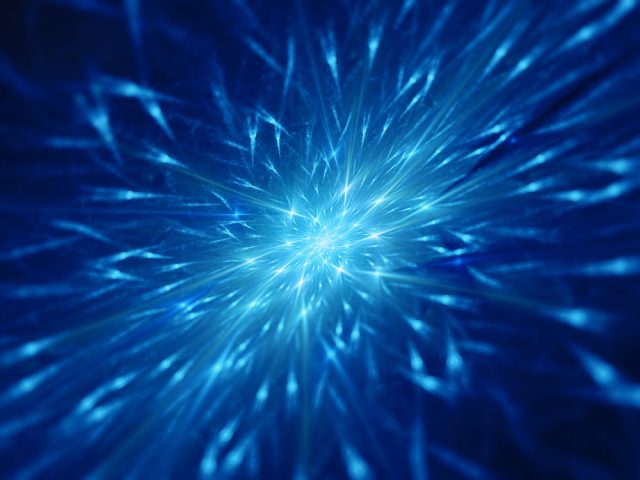 In our increasingly connected world,
In our increasingly connected world, 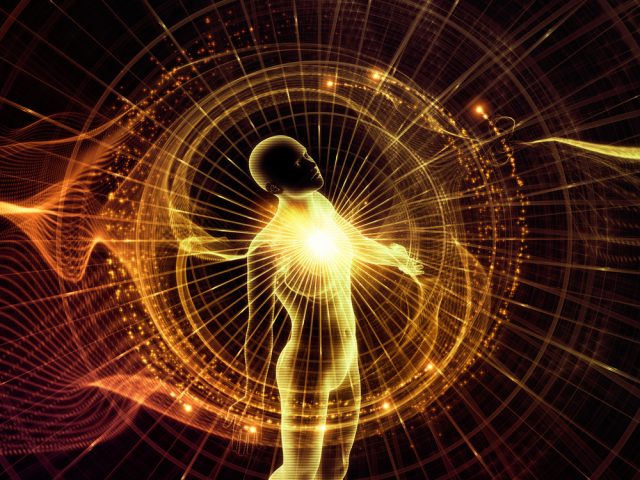 The investigation into the
The investigation into the  In the digital era, the ubiquity of wireless devices and appliances necessitates a conscientious approach to their use. Minimizing exposure to electromagnetic fields (EMF) from these devices is crucial for health safety. Practical measures can be taken to
In the digital era, the ubiquity of wireless devices and appliances necessitates a conscientious approach to their use. Minimizing exposure to electromagnetic fields (EMF) from these devices is crucial for health safety. Practical measures can be taken to  The concept of
The concept of  The relationship between physical activity and the mitigation of electromagnetic field (EMF) stress is an area of increasing interest. Regular physical activity has been shown to enhance the body’s resilience to various stressors, including EMF exposure. It is hypothesized that exercise may help in maintaining the integrity of cellular processes that could be disrupted by EMF.
The relationship between physical activity and the mitigation of electromagnetic field (EMF) stress is an area of increasing interest. Regular physical activity has been shown to enhance the body’s resilience to various stressors, including EMF exposure. It is hypothesized that exercise may help in maintaining the integrity of cellular processes that could be disrupted by EMF. In the pursuit of EMF awareness, the dissemination of accurate information through various platforms plays a crucial role. Educational resources and community outreach initiatives are fundamental in fostering an informed public. These efforts include the establishment of committees and forums that facilitate dialogue and knowledge sharing among experts, stakeholders, and the community at large.
In the pursuit of EMF awareness, the dissemination of accurate information through various platforms plays a crucial role. Educational resources and community outreach initiatives are fundamental in fostering an informed public. These efforts include the establishment of committees and forums that facilitate dialogue and knowledge sharing among experts, stakeholders, and the community at large. Bioenergetics is a fascinating field that explores the intricate ways in which energy is harnessed, transformed, and utilized within living systems. It encompasses the study of metabolic processes, the role of ATP in cellular functions, and the broader implications of energy flow in psychological and physiological states. This article delves into the fundamentals of bioenergetics, its historical roots, and its applications in various domains such as therapy, zoology, and mental health, providing a comprehensive understanding of how bioenergetic principles are integral to the vitality of life.
Bioenergetics is a fascinating field that explores the intricate ways in which energy is harnessed, transformed, and utilized within living systems. It encompasses the study of metabolic processes, the role of ATP in cellular functions, and the broader implications of energy flow in psychological and physiological states. This article delves into the fundamentals of bioenergetics, its historical roots, and its applications in various domains such as therapy, zoology, and mental health, providing a comprehensive understanding of how bioenergetic principles are integral to the vitality of life. The exploration of bio-energy within the field of bioenergetics extends beyond the confines of scientific inquiry, delving into the realm of cultural interpretations and traditional beliefs.
The exploration of bio-energy within the field of bioenergetics extends beyond the confines of scientific inquiry, delving into the realm of cultural interpretations and traditional beliefs.  The
The 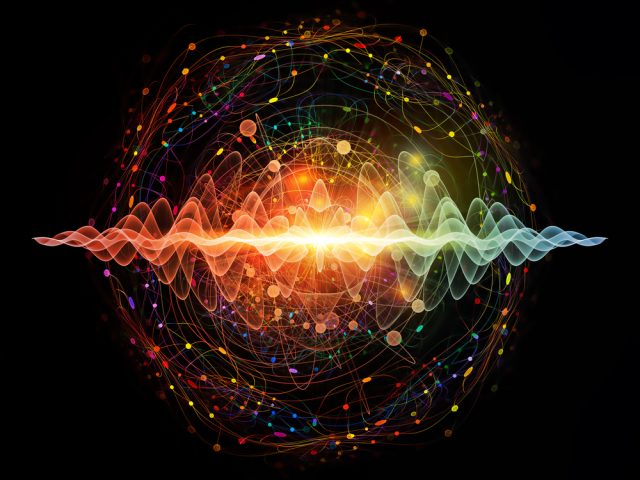 The cornerstone of bioenergetics in human physiology is the molecule adenosine triphosphate (ATP), which serves as the primary energy currency. ATP is synthesized and expended in a multitude of physiological processes, including muscular contraction, nerve impulse propagation, and biochemical synthesis. The following list highlights key areas where bioenergetics is integral to human physiology:
The cornerstone of bioenergetics in human physiology is the molecule adenosine triphosphate (ATP), which serves as the primary energy currency. ATP is synthesized and expended in a multitude of physiological processes, including muscular contraction, nerve impulse propagation, and biochemical synthesis. The following list highlights key areas where bioenergetics is integral to human physiology: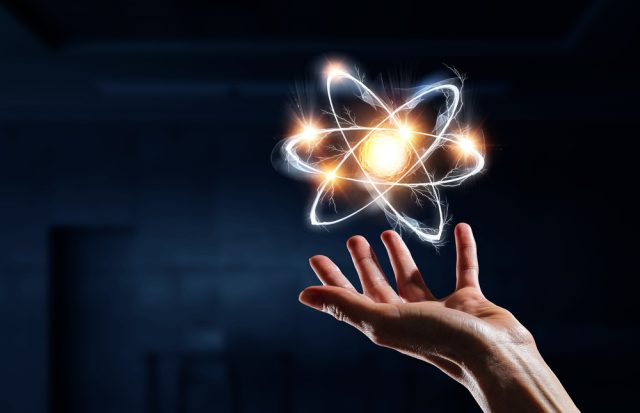 The energy currency of the cell, ATP (adenosine triphosphate), is a pivotal player in these metabolic transactions. ATP is synthesized through various biochemical pathways, including glycolysis, the tricarboxylic acid cycle, and oxidative phosphorylation, particularly within the mitochondria of eukaryotic cells. The flow of electrons through the electron transport chain is a critical step in the generation of ATP, providing the necessary free energy for the phosphorylation of ADP to ATP.
The energy currency of the cell, ATP (adenosine triphosphate), is a pivotal player in these metabolic transactions. ATP is synthesized through various biochemical pathways, including glycolysis, the tricarboxylic acid cycle, and oxidative phosphorylation, particularly within the mitochondria of eukaryotic cells. The flow of electrons through the electron transport chain is a critical step in the generation of ATP, providing the necessary free energy for the phosphorylation of ADP to ATP.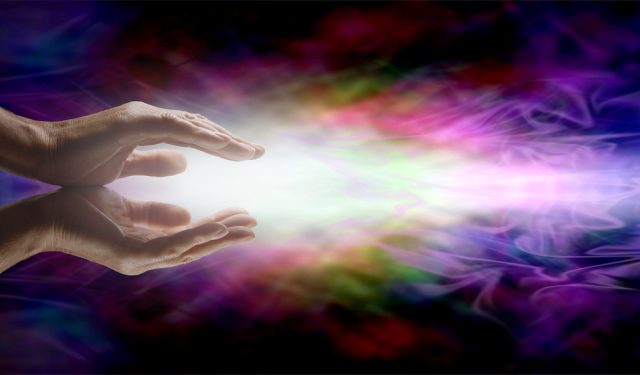 In the interdisciplinary field of bioenergetics, the integration of macroscopic and microscopic perspectives is pivotal.
In the interdisciplinary field of bioenergetics, the integration of macroscopic and microscopic perspectives is pivotal. 
